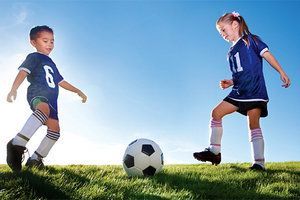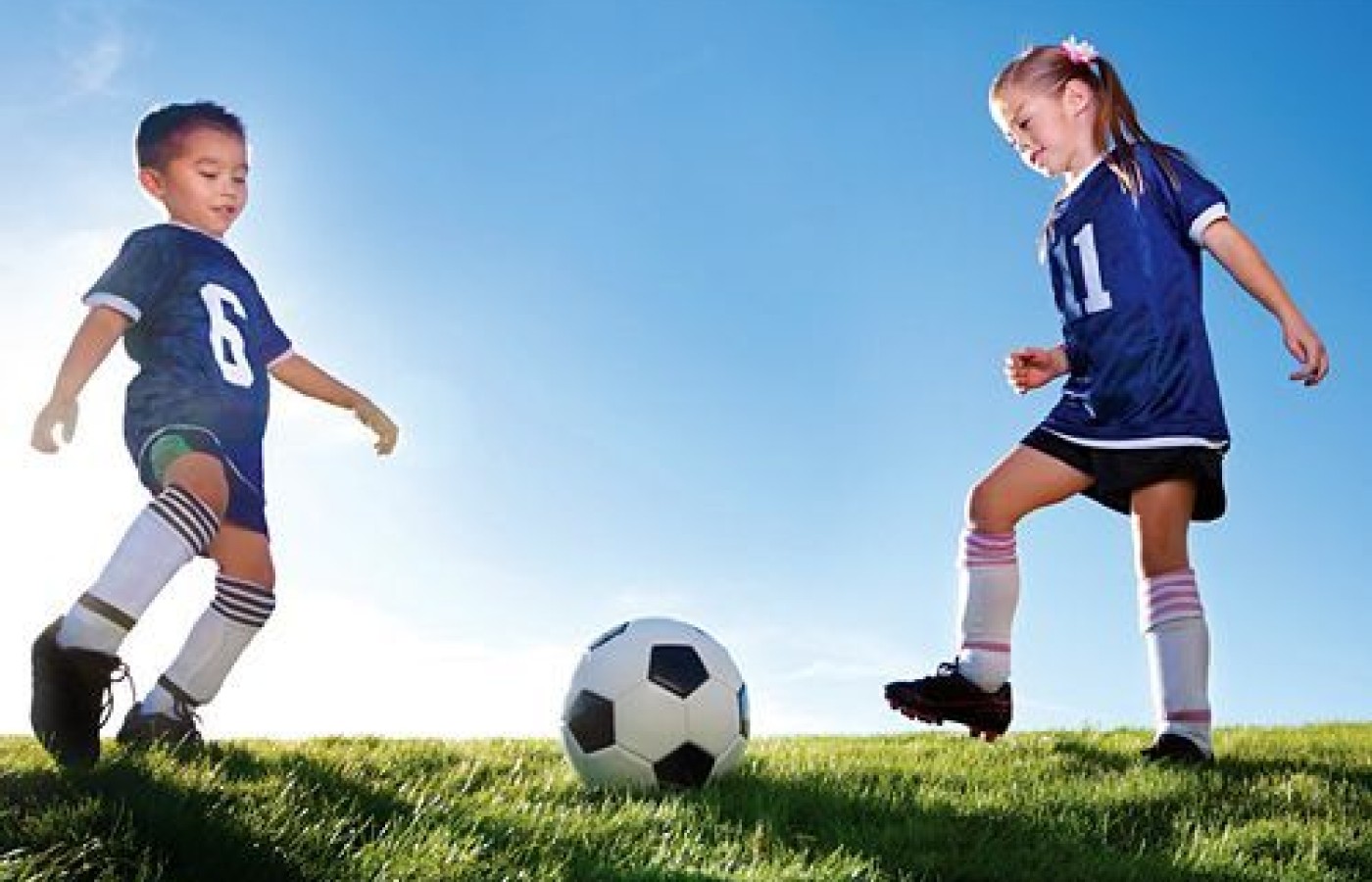It is estimated that 61% of patients with CTS avoid taking surgical options due to postoperative complications and costly surgical procedures. Chiropractic care offers a comprehensive and effective treatment for carpal tunnel syndrome, addressing the condition from multiple angles. Recent studies also have unveiled a game-changing adjunct to chiropractic treatments for CTS: nerve flossing.
Overuse Injuries in Young Athletes (Part 1)
More than 45 million children ages 6-18 participate in some form of organized athletics, and 75 percent of American families with school-aged children have at least one child participating in organized sports. With this substantial participation in sports comes an increasing number of injuries, many of which are primarily due to overuse.1
We have many problems with youth sports in this country. This article is not about those problems; however, the one issue we can address as chiropractors is to help parents and coaches become aware of the danger of overuse injuries, recognize overuse injuries and delineate the risk factors that are unique to the skeletally immature athlete.
Magnitude of the Problem
Let's start with some sobering statistics regarding sports injuries in general and overuse injuries in particular:2
- Sports injuries account for 4.3 million hospital emergency-room visits annually in the U.S.; 2.6 million of those visits are for children and young adults ages 5-24. (Center for Disease Control and Prevention)1-3
- Nearly 50 percent of all injuries sustained by middle- and high-school students during sports are overuse injuries. (American Academy of Orthopedic Surgeons)1,8
- Approximately 50 percent of overuse injuries in children and adolescents are preventable. (American College of Sports Medicine)1
- Approximately two of every five traumatic brain injuries among children are associated with participation in sports and recreational activities. (National Youth Sports Safety Foundation)3
- Twenty-one percent of youth athletes say they have been pressured to play with an injury. (National Youth Sports Safety Foundation)4
- There is a 70-80 percent attrition rate from sports by the time a child is 15 years of age, often due to programs overemphasizing winning. (National Youth Sports Safety Foundation)4

Participation in sports offers children many benefits including the development of self-esteem, peer socialization and general fitness. However, the overemphasis on competitive success, often driven by goals of collegiate scholarships, membership on Olympic and national teams, and even professional contracts is widespread in this country. Thus, it no surprise overuse injuries and burnout are common with the trend toward early and multifaceted training, frequent competition, and single-sport specialization.
Another glaring issue is that the original framework which provides the guidelines, rules and regulations for youth sports was established with little scientific evidence. Even basic, common-sense parameters for sports safety are often not implemented or followed. Vague descriptions of age of participants, readiness for participation, hours and structure of practice, and rules for competition vary between sports and between individual coaches.
Rainer Martens, a noted youth sport researcher and author, has stated that youth coaches exert great influence on young athletes, but fewer than 20 percent of these coaches have received any type of training to become a coach.5-6
Biomechanical Insights
Overuse injuries are caused by repetitive submaximal loading of the musculoskeletal system when rest is not adequate to allow for structural adaptation to take place. During participation in sports, repetitive loading to the weakened structures results in microtrauma. The injury can involve the muscle-tendon complex, bone, bursa, neurovascular structures and physis.
| TABLE 1: RISK FACTORS FOR OVERUSE INJURIES Intrinsic Growth-related Previous injury Previous level of conditioning Anatomical factors Menstrual dysfunction Psychological and developmental factors Extrinsic Training workload Training and competition schedule Equipment / footwear Environment Sport technique Adult and peer influence |
Little research has been done specifically on the incidence and prevalence of overuse injuries in children. These injuries are underestimated because epidemiologic studies define injury as requiring time loss from participation.
It is important to understand the different biomechanical forces applied to joints and surrounding structures during various sports activities; and special consideration has to be made for the unique injuries that occur in the growing skeleton, which also vary depending on the maturity of the skeleton. Six-year-olds are not anatomically the same as 16-year-olds. Therefore, special consideration has to be made for the growing skeleton and the age of development.
Risk Factors for Injury
There are intrinsic and extrinsic risk factors that cause overuse injuries.1,7-8 The intrinsic factors are primarily attributable to the physiological characteristics of the immature skeleton.
Bone growth is initiated at the site of the physis and epiphysis. There are two types of epiphyses in the extremities: pressure and traction epiphyses (apophyses). Pressure epiphyses are found at the proximal and distal end of the long bones. Longitudinal bone growth takes place from the growth plate (physis) between the metaphysis and epiphysis; injuries to the epiphysis and/or physis can result in longitudinal bone-growth disturbances.
Growth cartilage appears to be more vulnerable to stress than adjacent bone structures, especially during periods of rapid growth. Repetitive forces to immature long bones likely will result in injury to the weaker epiphyseal plate, rather than ligament disruption; this is not the case with the mature skeleton.
Traction epiphyses (or apophyses) are found at the insertion site of muscles and tendons and play a role in the development of the bone shape, but not in longitudinal bone growth. Since skeletal muscle and its tendon are more resistant to stress than the apophyseal growth plate, repetitive microtrauma can lead to traction apophysitis, which in turn, can lead to apophyseal avulsion.
Another factor that needs consideration is that the growth of the musculotendinous complex can lag behind the longitudinal gone growth. Frequently occurring during growth spurts, this lagging of muscle and tendon growth creates tightness and inflexibility around the joints. With increased activity, it can cause stresses to both joints and musculotendinous structures.
Imbalances also can occur due to uneven flexibility and strength of the surrounding muscle groups. Pre-existing misalignments can accentuate the likelihood of these imbalances. Other physiological factors include decreased bone density, which occurs before peak height and when there is a history of amenorrhea.
Extrinsic risk factors include inappropriate training, poor-fitting equipment and overscheduling. We now have a prefect recipe for injury.
It is important to realize that overuse injuries involve a complex interaction of multiple risk factors, both intrinsic and extrinsic. It's vital to perform a comprehensive evaluation and design a treatment program to accommodate a growing musculoskeletal system. It also is important to emphasize appropriate treatment and follow-up in order to prevent repeated overuse injury.
Note that previous injury is the strongest predictor of future injury, occurring as a result of inadequate rehabilitation of the initial injury and/or a failure to recognize and correct the factors that contributed to the original injury.
Editor's Note: Part 2 of this article (November issue) discusses common overuse injuries, including high-risk injuries, and imaging considerations. Complete references and supplemental reading suggestions appear in part 2.



